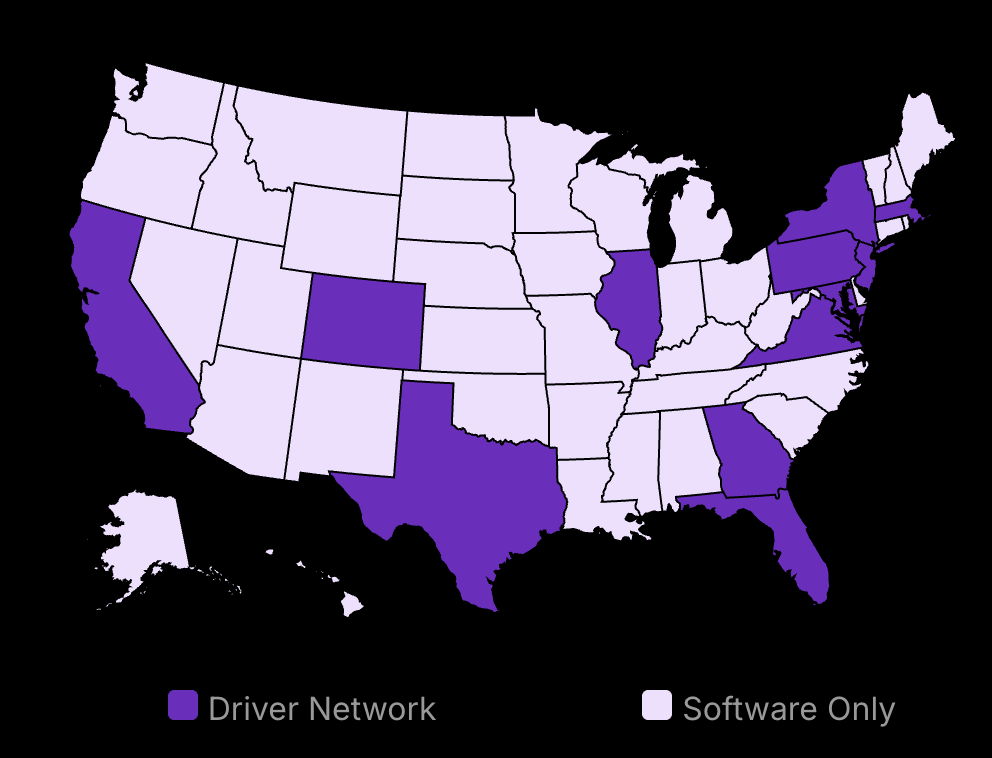In the ever-evolving landscape of the retail industry, omnichannel marketing has emerged as a game-changer for businesses looking to thrive in 2024 and beyond.
Omnichannel retail marketing is no longer a buzzword; it’s a necessity.
With customers expecting seamless, personalized experiences across all touchpoints, brands that fail to adapt risk falling behind.
But fear not! We’ve gathered insights from industry experts to bring you 15 proven best practices for omnichannel retail marketing success.
From leveraging data-driven insights to creating emotional connections with customers, these strategies will help you navigate the complexities of modern retail and boost your sales in the process.
So, whether you’re a seasoned marketer or just starting your omnichannel journey, get ready to unlock the secrets of retail success in 2024.
Impact of Omnichannel Strategies
Omnichannel customers have a 30% higher lifetime value to brands across online and offline channels.
Brands with effective omnichannel customer engagement see a 9.5% yearly increase in annual revenue, compared to 3.4% for poor omnichannel strategies.
Solid omnichannel brands witness a 7.5% yearly decrease in cost per contact.

Save 80% of delivery management time
We handle everything:
- Dedicated operations manager
- Real-time tracking dashboard
- Automated customer notifications
- Urgent issue resolution
Proven Omnichannel Retail Marketing Strategies to Boost Sales in 2024
Focus on creating a unified brand experience across all channels
In today’s competitive retail landscape, providing a consistent and cohesive brand experience across all channels is crucial for success. Customers expect a seamless shopping journey, whether they’re browsing your website, visiting your brick-and-mortar store, or engaging with your social media profiles.
To achieve this, ensure that your brand messaging, visual elements, and customer service are aligned across all touchpoints. This includes using the same logos, color schemes, and tone of voice in your marketing materials, as well as offering consistent product information and pricing across channels.
Benefits of a unified brand experience
Increases brand recognition and loyalty
Improves customer satisfaction and trust
Encourages cross-channel shopping and higher spending
Leverage customer data to personalize marketing messages and product recommendations
Collecting and analyzing customer data is essential for delivering personalized experiences that resonate with your target audience. By understanding their preferences, behavior, and purchase history, you can tailor your marketing messages and product recommendations to their specific needs and interests.
Utilize tools like customer relationship management (CRM) software and marketing automation platforms to segment your audience and create targeted campaigns. For example, you can send personalized email newsletters showcasing products that complement a customer’s recent purchase or offer exclusive discounts based on their browsing history.
Data-driven personalization techniques
Behavioral targeting based on website interactions
Predictive analytics to anticipate customer needs
Geotargeting to deliver location-specific offers and content
Invest in mobile-first strategies to cater to the growing mobile commerce trend
With the rapid growth of mobile commerce, prioritizing mobile-first strategies is essential for capturing the attention of on-the-go shoppers. Optimize your website for mobile devices, ensuring fast load times, intuitive navigation, and a responsive design that adapts to different screen sizes.
Consider developing a mobile app to provide a more immersive and convenient shopping experience. Mobile apps can offer features like push notifications, personalized recommendations, and seamless checkout processes, encouraging repeat visits and higher conversion rates.
Mobile and Social Commerce
By 2024, mobile commerce will constitute 40.4% of total ecommerce sales.
Mobile-first optimization tips
Simplify mobile checkout with auto-fill forms and mobile wallets
Use high-quality images and videos optimized for mobile viewing
Implement mobile-specific features like click-to-call and location-based services
Implement a seamless cross-channel customer journey with consistent messaging and branding
Creating a seamless cross-channel customer journey is crucial for providing a frictionless and seamless shopping experience everywhere. Ensure that customers can easily navigate between channels without encountering inconsistencies in messaging, branding, or functionality—something the WhatsApp Business API can help streamline for businesses.
For example, allow customers to browse products online and pick them up in-store, or enable them to return items purchased online at their nearest physical location. Offer consistent promotions and loyalty programs across channels, and use cross-channel retargeting to remind customers of items they viewed online when they visited your store.
Cross-channel integration strategies
-
Implement a unified customer database across channels
-
Use cross-channel attribution models to measure the impact of each touchpoint
-
Provide real-time inventory visibility across online and offline channels
Utilize AI-powered chatbots to provide instant customer support and personalized recommendations
Artificial intelligence (AI) has revolutionized the way retailers interact with customers, enabling them to provide instant support and personalized recommendations at scale. Implement AI-powered chatbots on your website, mobile app, and social media channels to assist customers with inquiries, troubleshoot issues, and offer tailored product suggestions.
Chatbots can handle a wide range of customer service tasks, freeing up your human agents to focus on more complex issues. They can also gather valuable data on customer preferences and behavior, allowing you to continually refine your omnichannel strategies.
AI chatbot best practices
Train your chatbot using a comprehensive knowledge base and natural language processing (NLP)
Integrate your chatbot with your CRM and inventory management systems for real-time data access
Allow seamless handoffs between chatbots and human agents for more complex inquiries
Harness the Power of Data-Driven Insights for Retail Success Via Online and Offline Channels
Collect and analyze customer data from multiple touchpoints for a 360-degree view
Segment your audience using data and create targeted marketing campaigns
Monitor key performance indicators (KPIs) to measure success and make informed decisions
In today’s competitive retail landscape, leveraging data-driven insights is crucial for staying ahead of the curve. By collecting and analyzing customer data from various touchpoints, retailers can gain a comprehensive understanding of their target audience’s preferences, behaviors, and needs. This 360-degree view enables businesses to make informed decisions and optimize their omnichannel marketing strategies for maximum impact.
Collecting and Analyzing Customer Data
To harness the power of data-driven insights, retailers must first establish a robust data collection system that encompasses all customer touchpoints, including:
In-store interactions
Online purchases
Social media engagement
Customer service inquiries
By integrating data from these various sources, retailers can create a unified customer profile that provides valuable insights into their target audience’s preferences and behaviors.
Customer Behavior and Preferences:
73% of shoppers favor using multiple channels for shopping.
60% of people who commute to work use both in-store and online channels when making a purchase.
75% of shoppers in the US research their purchases online before committing to it.
50% of people prefer to buy online and pick up in-store rather than opt for home delivery.
Segmenting Your Audience for Targeted Campaigns
Once you have collected and analyzed your customer data, the next step is to segment your audience based on shared characteristics, such as:
-
Demographics (age, gender, income)
-
Psychographics (interests, values, lifestyle)
-
Behavioral patterns (purchase history, engagement levels)
-
Geographic location
By segmenting your audience, you can create highly targeted marketing campaigns that resonate with each group’s specific needs and preferences. This approach not only improves the effectiveness of your marketing efforts but also enhances the overall customer experience.
Personalization and Targeted Content
Segmentation allows retailers to personalize their marketing messages and tailor their content to each group’s interests. For example, if you have identified a segment of eco-conscious customers, you can create targeted campaigns that highlight your brand’s sustainable practices and environmentally friendly products. According to a study by McKinsey, personalization can increase customer engagement by up to 20% and conversion rates by up to 15%.
Monitoring Key Performance Indicators (KPIs)
To ensure the success of your omnichannel marketing strategies, it is essential to monitor key performance indicators (KPIs) regularly. Some important KPIs for retail businesses include:
-
Sales revenue
-
Customer acquisition cost (CAC)
-
Customer lifetime value (CLV)
-
Conversion rates
-
Customer retention rate
By tracking these KPIs, retailers can assess the effectiveness of their marketing campaigns and make data-driven decisions to optimize their strategies. Regular monitoring also enables businesses to identify areas for improvement and quickly adapt to changing customer needs and market trends.
A/B Testing and Continuous Optimization
One powerful way to leverage data-driven insights is through A/B testing, which involves comparing two versions of a marketing element (e.g., email subject line, website layout) to determine which performs better. For instance, Amazon’s A/B testing of its product recommendation algorithm led to a 29% increase in sales. By continuously testing and optimizing their marketing efforts, retailers can refine their strategies and maximize their ROI.
Create a Seamless Cross-Channel Integration for Enhanced Customer Experience
In today’s fast-paced retail landscape, customers expect a seamless and consistent experience across all channels. By integrating your various touchpoints, such as in-store, online, mobile, and social media, you can create a unified brand experience that fosters customer loyalty and drives sales.
Ensure a Consistent Brand Experience Across All Channels
Consistency is key when it comes to delivering a memorable and engaging customer experience. Your brand messaging, visuals, and tone should remain cohesive across all channels, allowing customers to easily recognize and connect with your brand.
Develop a Comprehensive Brand Style Guide
To maintain consistency, create a detailed brand style guide that outlines your brand’s visual elements, such as logos, color palettes, and typography, as well as your brand voice and messaging. Share this guide with all team members involved in content creation and future marketing campaigns to ensure a unified approach.
Regularly Audit Your Channels for Consistency
Conduct periodic audits of your various channels to identify any inconsistencies in branding or messaging. Address any discrepancies promptly to maintain a cohesive brand and unified customer experience.
Implement a Centralized Inventory Management System
A centralized inventory management system is essential for providing accurate, real-time stock availability information across all channels. This ensures that customers can easily find the products they want, regardless of whether they’re shopping in-store, online, or through a mobile device or app.
Invest in a Robust Inventory Management Solution
Research and invest in a comprehensive inventory management solution that integrates with your existing systems, such as your e-commerce platform and point-of-sale (POS) software. Look for features like real-time inventory tracking, automated reordering, and multi-location management.
Train Your Staff on the Inventory Management System
Ensure that all relevant staff members, including sales associates and warehouse personnel, are properly trained on using the inventory management system. This will help maintain accurate stock levels and facilitate smooth operations across all channels.
Offer Flexible Fulfillment Options
In the era of omnichannel retailing, customers expect a variety of convenient fulfillment options that cater to their individual preferences. By offering flexible options like buy online, pick up in-store (BOPIS) and ship-from-store, you can enhance the customer experience and drive loyalty.
Implement BOPIS and Ship-from-Store Capabilities
Work with your IT and operations teams to implement BOPIS and ship-from-store capabilities. This may involve integrating your e-commerce platform with your in-store inventory management system and training staff on order fulfillment procedures.
Communicate Fulfillment Options Clearly
Ensure that your fulfillment options are clearly communicated across all channels, including your website, mobile app, and in-store signage. Provide detailed instructions on how customers can take advantage of each option, such as the process for placing a BOPIS order or the timeframe for ship-from-store deliveries.
By creating a seamless cross-channel integration and offering flexible fulfillment options, you can enhance the customer experience and foster loyalty in an increasingly competitive retail landscape.
Winning Omnichannel Retail Marketing Trends from 2023
Brands that mastered the four pillars of omnichannel strategy saw significant growth
Personalized customer engagement and seamless cross-channel integration were key drivers
Data-driven decision-making helped retailers adapt to changing customer behaviors
In 2023, retailers that focused on building a strong omnichannel strategy saw significant improvements in customer loyalty and sales. The four pillars of a successful omnichannel strategy emerged as:
-
Consistent brand experience
-
Personalized customer engagement
-
Seamless cross-channel integration
-
Data-driven decision making
Omnichannel Sales:
27% of all retail sales are generated by omnichannel consumers.
Consistent Brand Experience Across All Touchpoints
Retailers that provided a consistent brand experience across all channels, from in-store to online and via desktop or mobile device, saw higher customer satisfaction rates. This meant ensuring that the look and feel of the brand, as well as the messaging and product offerings, were aligned across all touchpoints.
Case Study: Nike’s Unified Commerce Approach
Nike’s “Consumer Direct Acceleration” strategy focused on creating a unified commerce approach, where customers could seamlessly shop across all channels. By investing in digital technologies and integrating their online and offline sales channels, Nike was able to provide a consistent brand experience and drive sales growth. According to Nike’s official website, the “Consumer Direct Acceleration” strategy aimed to enhance customer experiences across all touchpoints.
Personalized Customer Engagement Drove Loyalty
Brands that leveraged customer data to deliver personalized experiences saw higher engagement and loyalty rates. This included tailored product recommendations, targeted promotions, and personalized content across all channels.
Sephora’s Personalization Strategy
Sephora’s “Beauty Insider” loyalty program uses customer data to deliver personalized recommendations and exclusive offers. By analyzing purchase history and preferences, Sephora was able to create targeted email campaigns and in-app experiences that drove higher conversion rates and customer lifetime value. Sephora’s marketing strategy emphasized the importance of personalization, as noted in a Salesforce blog post.
Seamless Cross-Channel Integration Improved Customer Experience
Retailers that invested in seamless cross-channel integration, such as buy online, pick up in-store (BOPIS) and curbside pickup, saw higher customer satisfaction and loyalty. By providing customers with flexibility and convenience, retailers were able to meet changing consumer behaviors and drive sales.
Target’s Omnichannel Fulfillment Strategy
Target’s investment in omnichannel fulfillment capabilities, such as same-day delivery and in-store pickup, paid off in 2023. The retailer reported that its same-day services grew by nearly 235% in Q1 2023, driven by strong demand for Drive Up and in-store pickup. This growth was documented in Target’s corporate earnings report.
Data-Driven Decision Making Helped Retailers Adapt
Retailers that used data analytics to inform their omnichannel strategies were able to quickly adapt to changing customer behaviors and market conditions. By analyzing customer data across all channels, retailers could identify trends, optimize their marketing efforts, and make informed decisions about inventory management and fulfillment.
Walmart’s Data-Driven Approach
Walmart’s investment in data analytics helped the retailer optimize its omnichannel strategy in 2023. By analyzing customer data across all channels, Walmart was able to identify trends and make informed decisions about inventory management, pricing, and promotions. This helped the retailer maintain its competitive edge and drive sales growth. Walmart’s data-driven approach was discussed in a Forbes article.
Personalized Email Campaigns Drive Engagement
Personalized email campaigns, based on customer behavior and preferences, proved to be a highly effective strategy in 2023. By segmenting their email lists and crafting targeted messages, brands were able to significantly increase their open rates and click-through rates. According to a study by Campaign Monitor, personalized email campaigns saw an average open rate of 18.8% and a click-through rate of 2.6%, outperforming generic campaigns.
Behavioral Triggers
Many successful email campaigns utilized behavioral triggers, such as abandoned cart reminders, post-purchase follow-ups, and product recommendations based on previous purchases. These timely and relevant messages resonated with customers, leading to higher engagement and conversions. For instance, a study by MarketingSherpa found that behavioral email triggers resulted in a 152% increase in conversion rates compared to traditional email campaigns.
In-Store Personalization Enhances Customer Experience
Brands that offered personalized in-store experiences, such as clienteling and guided selling, reported higher levels of customer satisfaction and increased average order values in 2023. By equipping store associates with customer data and AI-powered recommendations, retailers were able to provide tailored advice and product suggestions to individual shoppers. For example, Salesforce reported that clienteling tools led to a 25% increase in average order value and a 15% increase in customer satisfaction.
Clienteling Tools
The adoption of clienteling tools, which provide store associates with access to customer purchase history, preferences, and personal information, allowed for more meaningful interactions between staff and shoppers. This level of personalization helped to build stronger relationships and foster customer loyalty. A case study by Forrester highlighted that clienteling tools resulted in a 12% increase in customer retention and a 10% increase in sales.
The Rise of AI-Powered Personalization Engines
In 2023, brands that embraced AI-powered personalization engines saw significant improvements in their conversion rates. These sophisticated algorithms analyzed customer data, including browsing history, purchase behavior, and demographic information, to deliver highly targeted product recommendations and marketing messages. According to Gartner, by 2025, 60% of organizations will use AI-powered personalization to enhance customer experiences.
Real-Time Personalization
One of the key advantages of AI-powered personalization engines was their ability to provide real-time personalization. As customers interacted with a brand’s website or mobile app, the AI system continuously adapted its recommendations based on the user’s actions, ensuring that the most relevant products and offers were always presented. A study by Adobe found that real-time personalization led to a 22% increase in conversion rates and a 15% increase in customer satisfaction.
Looking Ahead to 2024
As we move into 2024, the trend toward personalization in omnichannel retail marketing is expected to continue and evolve. Brands that invest in advanced AI technologies, robust customer data platforms, and seamless integration between online and offline channels will be well-positioned to deliver the highly targeted, individualized experiences that customers have come to expect.
The Evolution of Omnichannel Customer Experience in 2024
Brands prioritize seamless, personalized experiences across channels
Real-time data sync and unified customer journey view become crucial
Emotional connections are fostered through personalized interactions and exceptional service
Omnichannel CX Trends in 2024
In 2024, omnichannel customer experience has become a top priority for brands looking to stay competitive. As customers continue to expect a seamless and personalized experience across all touchpoints, companies have invested heavily in technologies that enable real-time data synchronization and provide a unified view of the customer journey.
One of the most significant trends in omnichannel CX this year has been the focus on creating emotional connections with customers. Brands have realized that simply providing a consistent experience across channels is not enough; they must also engage with customers on a deeper level through personalized interactions and exceptional service.
Personalization at Scale
To achieve this level of personalization at scale, companies have turned to AI-powered solutions that can analyze customer data in real time and deliver tailored experiences across multiple channels. For example, a customer who abandons their cart on a brand’s website may receive a personalized email offering a discount on the items they left behind, followed by a targeted ad on social media reminding them to complete their purchase.
According to Algolia, 92% of businesses are using AI-driven personalization to drive growth and revenue, and they’re finding personalization so powerful that three of four business leaders believe it’s crucial for success.
The Rise of Conversational Commerce
Another key trend in omnichannel CX this year has been the rise of conversational commerce. With the proliferation of messaging apps, AI Research Assistants, and voice assistants, customers are increasingly expecting to be able to interact with brands through natural, conversational interfaces.
To meet this demand, companies have invested in chatbots and voice-enabled solutions that can handle customer inquiries, process orders, and provide personalized recommendations. These conversational interfaces have proven particularly effective in industries such as retail, where customers often have questions about products or need assistance with their purchases.
Integrating Conversational Commerce into the Omnichannel Experience
The challenge for brands has been integrating these conversational interfaces into their overall omnichannel strategy. To be truly effective, chatbots and voice assistants must have access to the same customer data and be able to provide the same level of personalized service as other channels.
Conversational commerce can significantly enhance customer satisfaction, as seen in the video “How Conversational Commerce Increases Customer Satisfaction”.
The Future of Omnichannel CX
As we look ahead to the next 12 months, it’s clear that omnichannel CX will continue to evolve at a rapid pace. One of the most exciting developments on the horizon is the potential for augmented reality (AR) and virtual reality (VR) to transform the customer experience.
Imagine being able to virtually try on clothes from the comfort of your own home, or to visualize how a piece of furniture would look in your living room before making a full purchase online. These immersive experiences have the potential to blur the lines between online and offline shopping, creating a truly seamless omnichannel experience.
Adoption of Omnichannel Technologies:
Over 60% of consumers participate in omnichannel shopping, leveraging technologies like AR, VR, and AI.
Preparing for the Next Wave of Omnichannel Innovation
To stay ahead of the curve, brands must start preparing now for the next wave of omnichannel innovation. This means investing in the necessary technologies, such as AR and VR, and developing the skills and capabilities needed to create compelling, immersive experiences.
It also means continuing to prioritize personalization and emotional connection, even as the channels and technologies evolve. By keeping the customer at the center of the omnichannel experience, brands can build lasting relationships that drive loyalty and growth.
IBM highlights the importance of re-evaluating data management in the generative AI age to ensure that organizations are using a sound approach to augment large language models with enterprise/non-public data.
Emerging Technologies Shaping the Future of Omnichannel Retail
AR and VR create immersive shopping experiences
AI automates inventory management, pricing, and customer service
IoT enables smart store features like automated checkout
The retail landscape is undergoing a significant transformation, driven by rapid advancements in technology. As consumers demand seamless, personalized experiences across multiple channels, retailers must embrace emerging technologies to stay competitive. Let’s explore how augmented reality (AR), virtual reality (VR), artificial intelligence (AI), machine learning, and the Internet of Things (IoT) are revolutionizing the omnichannel retail experience.
Augmented Reality and Virtual Reality: Immersive Shopping Experiences
AR and VR technologies are blurring the lines between online and in-store shopping, offering customers engaging, interactive experiences. With AR, shoppers can visualize products in their own space, such as seeing how furniture would look in their living room or trying on virtual makeup. Sephora’s Virtual Artist app allows users to experiment with different makeup looks using their smartphone camera.
VR takes immersion a step further, transporting customers to virtual showrooms or enabling them to explore products in 3D. Ikea’s VR experience lets users design their dream kitchen, while Audi’s VR showroom allows potential buyers to customize and explore vehicles in detail.
Improved Shopping Experinces:
46% of brands have invested in showrooms to improve the in-store shopping experience.
By integrating AR and VR into their omnichannel strategies, retailers can:
Increase customer engagement and interaction
Reduce product returns by providing more accurate product representations
Offer personalized, memorable shopping experiences
According to a Retail Dive article, 71% of consumers say they would shop more often if they could use AR, and 61% say they would be more likely to choose a retailer that offers AR experiences over one that does not. Additionally, a Forbes article highlights that 75% of companies using VR or AR report a significant increase in customer engagement.
AI and Machine Learning: Automation and Optimization
AI and machine learning are powering intelligent automation and optimization across various aspects of omnichannel retail. By analyzing vast amounts of data, these technologies help retailers make data-driven decisions and improve operational efficiency.
Inventory Management and Demand Forecasting
AI-powered inventory management systems can accurately predict demand, optimize stock levels, and prevent overselling or stockouts. Machine learning algorithms analyze historical sales data, customer behavior, and external factors like weather and holidays to generate precise demand forecasts. This enables retailers to maintain optimal inventory levels across all channels, reducing costs and improving customer satisfaction. For example, Walmart has seen a 15% reduction in inventory costs by using AI-powered demand forecasting.
Dynamic Pricing and Promotions
AI can also help retailers optimize pricing and promotions in real time. By analyzing competitor prices, customer behavior, and market trends, AI algorithms can recommend dynamic pricing strategies that maximize profitability while remaining competitive. Machine learning can also personalize promotions based on individual customer preferences and behavior, increasing conversion rates and loyalty.
Internet of Things: Enabling Smart Store Features
The Internet of Things (IoT) is transforming physical retail spaces into connected, intelligent environments. By deploying a network of sensors, beacons, and smart devices, retailers can gather real-time data on customer behavior, product performance, and store operations.
Automated Checkout and Cashierless Stores
IoT-enabled automated checkout systems, like Amazon Go, allow customers to simply grab items and walk out, eliminating long queues and improving the shopping experience. Sensors and computer vision track products taken from shelves, and the customer’s account is automatically charged upon leaving the store. This frictionless shopping experience is becoming increasingly popular, with retailers like Walmart and 7-Eleven also experimenting with cashierless concepts.
Real-time Inventory Tracking and Shelf Monitoring
IoT sensors can monitor shelf stock levels in real-time, alerting staff when products run low or are misplaced. This ensures that shelves are always properly stocked and reduces lost sales due to out-of-stock. Smart shelves can also track product interactions, providing valuable insights into customer behavior and preferences.
By leveraging IoT technology, retailers can:
Enhance the in-store experience with convenient, seamless shopping
Optimize store operations and reduce costs
Gather valuable data on customer behavior and product performance
As these emerging technologies continue to advance, retailers must strategically invest in and integrate them into their omnichannel strategies. By doing so, they can create compelling, differentiated experiences that meet the evolving needs and expectations of today’s connected consumers.
Adapting to Changing Customer Behaviors and Expectations in Multiple Channels
Stay ahead by monitoring shifts in customer preferences
Be agile and flexible to adapt to market changes quickly
Use customer feedback to guide omnichannel marketing decisions
Omnichannel Tactics and ROI
Expanding to three or more channels can boost a company's order rate by 494%.
Using three or more channels in a campaign can earn a 287% higher purchase rate than a single-channel campaign.
Customer purchase frequency is 250% higher on omnichannel than on a single channel.
The Evolving Landscape of Customer Behavior in 2024
In 2024, customers expect seamless, personalized experiences across all channels. They want brands to anticipate their needs and provide relevant, timely content. An omnichannel marketing strategy has become essential for meeting these expectations. Discover how to develop a successful strategy for omnichannel retailing that keeps you ahead in 2024 and beyond.
Over the past year, we’ve seen a significant shift in how customers interact with brands. Mobile usage continues to rise, with 71% of all online traffic coming from mobile devices. Social media platforms like TikTok and Instagram have become key channels for product discovery and engagement.
The Impact of COVID-19 on Consumer Behavior
The pandemic accelerated the adoption of digital channels, with e-commerce sales growing by 44% in 2020 alone. Even as physical stores reopened, many customers continued to prefer online shopping online, for its convenience and safety.
Brands that adapted quickly to this shift, offering options like curbside pickup and virtual consultations, were able to maintain customer loyalty. Those that struggled to provide a seamless omnichannel experience risked losing customers to more agile competitors.
Embracing Agility and Flexibility in Omnichannel Strategies
To keep pace with changing customer behaviors, brands must prioritize agility and flexibility in their omnichannel strategies. This means being ready to quickly adjust tactics based on real-time data and insights.
For example, if a particular product is trending on social media, brands should be prepared to feature it prominently across all channels and ensure sufficient inventory to meet demand. Similarly, if customers are expressing frustration with a specific aspect of the shopping experience, brands must act swiftly to address the issue and communicate the solution.
Leveraging Customer Feedback and Insights
Regularly gathering and analyzing customer feedback is crucial for staying attuned to changing behaviors and expectations. This can be done through surveys, social media monitoring, and customer service interactions.
By actively seeking out and responding to customer feedback, brands demonstrate their commitment to providing an exceptional omnichannel experience. This not only helps retain existing loyal customers but also attracts new ones through positive word-of-mouth.
The Role of Data Analytics in Omnichannel Marketing
Data analytics plays a vital role in understanding customer behavior and informing omnichannel marketing decisions. By analyzing data from multiple touchpoints, brands can gain valuable insights into customer preferences, purchase patterns, and engagement levels.
This data can then be used to personalize content, optimize channel performance, and identify opportunities for improvement. For example, if data shows that a particular customer segment is more likely to make a full purchase in store than after receiving a personalized email, brands can prioritize this tactic in their omnichannel strategy.
Looking ahead, the next 12 months will likely bring even more changes in customer behavior as new technologies and social trends emerge. To stay competitive, brands must remain vigilant, continually monitoring and adapting to these shifts. By embracing agility, leveraging customer insights, and prioritizing seamless omnichannel experiences, brands can build lasting relationships with their customers and thrive in the ever-evolving retail landscape.
What is Omnichannel Retail Marketing?
Omnichannel retail marketing provides a seamless customer experience across all channels
It integrates various touchpoints to create a unified brand experience
Personalized, relevant, and timely marketing messages are delivered based on customer behavior and preferences
The Fundamentals of Omnichannel Retail Marketing
Omnichannel retail marketing is a strategic approach that focuses on creating a consistent and seamless customer experience across all channels and touchpoints. This includes in-store, online, mobile, social media, and any other channel where customers interact with a brand. The goal is to provide a unified brand experience, regardless of how or where customers choose to engage. Interested in enhancing your brand’s shopping journey? Discover how embracing an omnichannel strategy can elevate your customer’s experience.
According to a study by Harvard Business Review, 73% of customers use multiple channels during their shopping and buying journey. By implementing an omnichannel strategy, retailers can meet customers where they are and provide a more convenient and personalized experience.
Integration of Touchpoints
One of the key aspects of omnichannel retail marketing is the integration of various touchpoints. This means that customer data and interactions are shared across all channels, allowing for a more personalized and efficient experience. For example, if a customer adds an item to their online cart but doesn’t complete the purchase, they may receive a targeted email or mobile notification reminding them about the item.
Macy’s, a leading department store chain, has successfully implemented an omnichannel strategy. They offer a seamless experience across their website, mobile app, and in-store touchpoints. Customers can easily check product availability, make purchases online, and choose to pick up their items in-store or have them delivered to their homes.
Personalization and Relevance
Another crucial component of a successful omnichannel retail strategy and marketing is delivering personalized and relevant marketing messages to customers. By leveraging customer data and insights, retailers can tailor their communications and offerings to individual preferences and behaviors.
Sephora, a beauty retailer, excels at personalization. They use customer data from their loyalty program, Beauty Insider, to provide customized product recommendations, targeted promotions, and exclusive experiences. This level of personalization has helped Sephora build a strong and engaged customer base.
According to a study by Epsilon, 80% of customers are more likely to make a purchase when brands offer personalized experiences. By investing in personalization, retailers can increase customer loyalty, engagement, and ultimately, sales.
Personalization in Omnichannel Marketing
77% of highly effective omnichannel businesses store customer data across various channels, compared to 48% of less effective omnichannel companies.
Consistency and Timeliness
To create a truly seamless omnichannel experience, retailers must ensure consistency and timeliness across all touchpoints. This means that branding, messaging, and customer service should be cohesive, regardless of the channel. Additionally, marketing communications should be delivered at the right time and in the right context to maximize impact.
Nike, a global sportswear brand, demonstrates consistency and timeliness in their omnichannel approach. They maintain a strong brand identity across all channels, from their website and mobile app to their in-store experiences. Nike also leverages real-time data to deliver timely and relevant marketing messages, such as personalized product recommendations based on a customer’s previous purchases or browsing history.
By focusing on the fundamentals of omnichannel retail marketing – integration, personalization, consistency, and timeliness – retailers can create a competitive advantage and drive long-term success in the ever-evolving omnichannel retail trends landscape.
Embracing the Future of Omnichannel Retail Marketing
In 2024, the retail landscape will continue to evolve at a rapid pace. By implementing these 15 best practices from industry experts, you can stay ahead of the curve and deliver exceptional omnichannel experiences to your customers. From creating a unified brand presence to leveraging data-driven insights and emerging technologies, these strategies will help you boost sales and foster long-lasting customer relationships.
As you navigate the dynamic world of omnichannel retail marketing, remember that success lies in your ability to adapt, innovate, and always put your customers first. By staying attuned to their evolving needs and preferences, you can create personalized experiences that resonate and drive loyalty.
So, are you ready to take your own omnichannel retail strategy and marketing to the next level? Start by assessing your current strategies and identifying areas for improvement. Then, prioritize the best practices that align with your business goals and resources. With a clear plan of action and a commitment to continuous optimization, you’ll be well on your way to omnichannel retail success in 2024 and beyond.



























